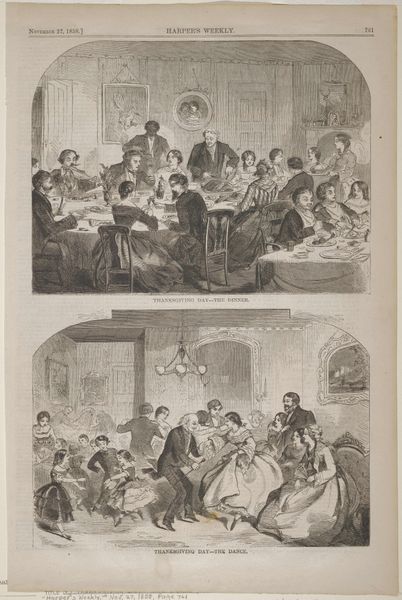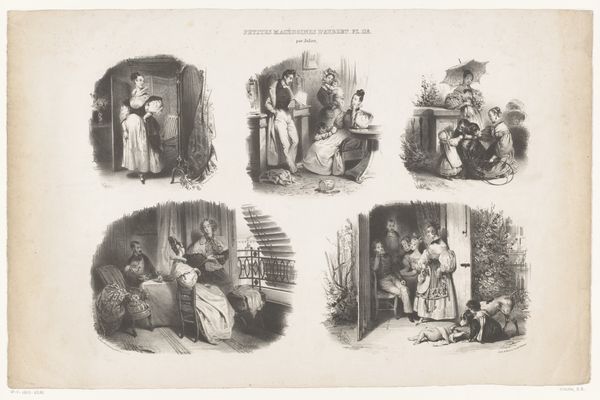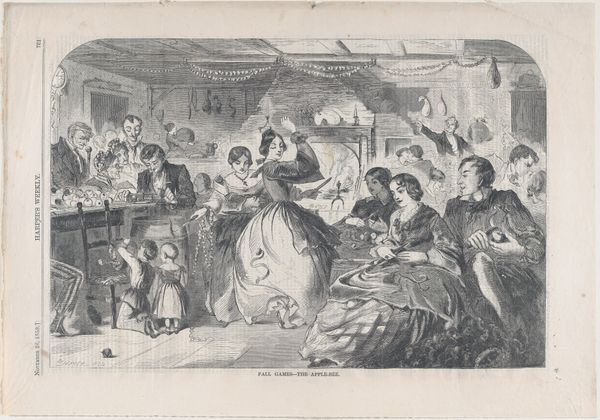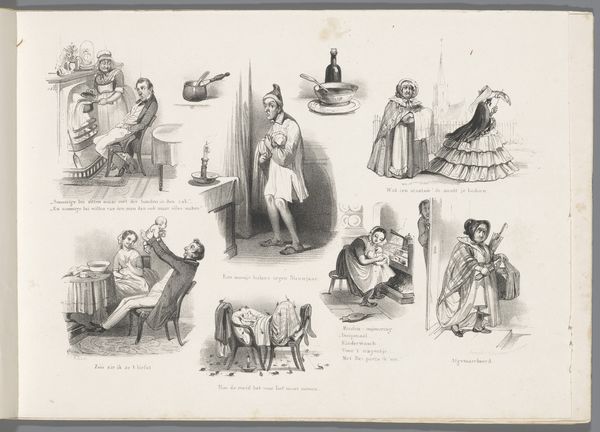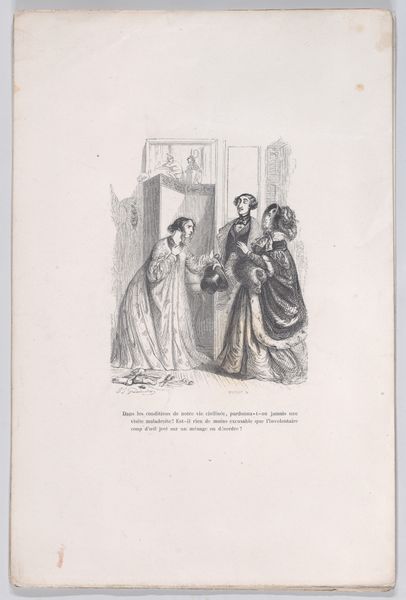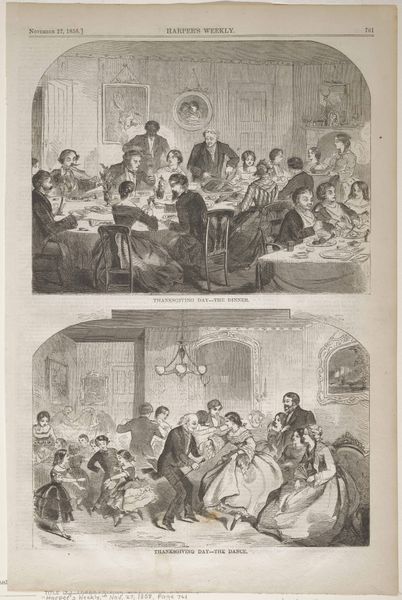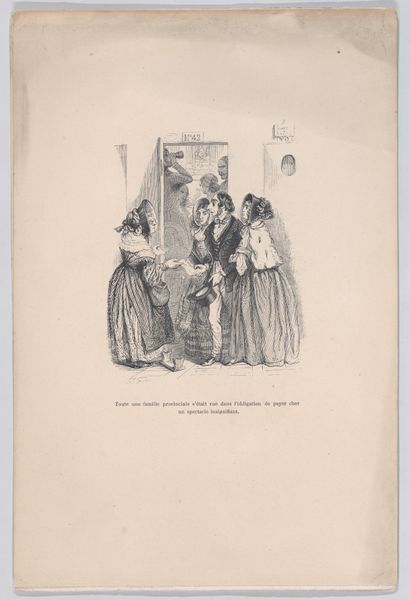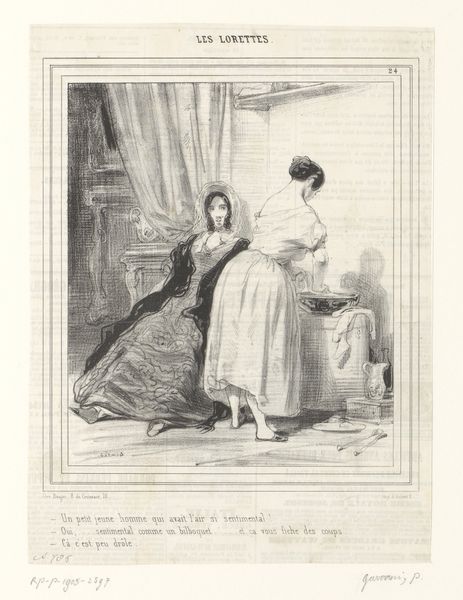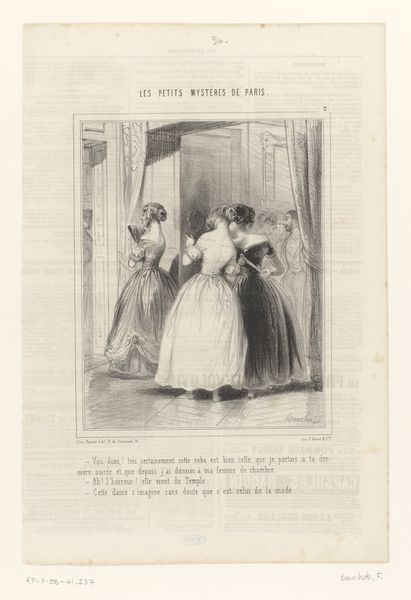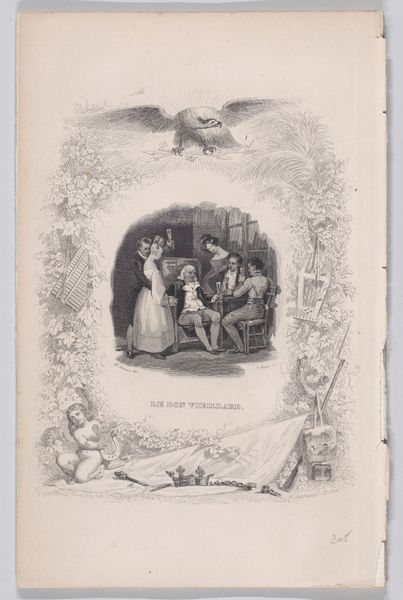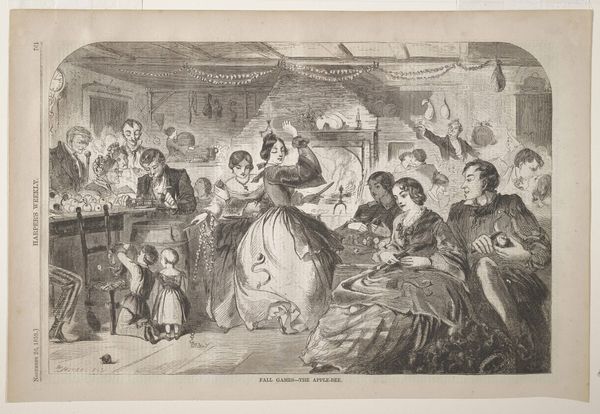
print, engraving
#
narrative-art
# print
#
book
#
pencil sketch
#
old engraving style
#
romanticism
#
genre-painting
#
engraving
Dimensions: height 385 mm, width 273 mm
Copyright: Rijks Museum: Open Domain
Curator: This is a print entitled "Four Scenes with People Reading" by Henry Valentin, likely created sometime between 1843 and 1855. It appears to be an engraving, presenting four distinct vignettes on a single sheet. Editor: It’s interesting, a collection of snapshots! I’m drawn to the varied settings, each so intimate in its way. The one of the guy reading in bed seems so familiar, like a private moment. But the whole image has a somber cast; it’s not a particularly jubilant reading experience depicted, is it? Curator: That subdued tone could speak to the social role of literacy at the time. This was a period of burgeoning print culture, where reading was often associated with self-improvement and social mobility. The figures, caught in these acts of contemplation, reflect that seriousness. Note how each scene presents a different social context – domestic solitude, classroom study, communal learning among women… Editor: Ah, so you are seeing this from the socio-economic aspect. It's interesting the print gives these fleeting snapshots from different scenes that are almost dreamlike, or melancholic memories that seem both mundane and momentous. I can relate that feeling. Look at that kid who looks ecstatic from what he is reading, throwing pages into the air. I almost feel bad for that older woman though, with the judging eyes of other adults upon her reading in her scene. What is she reading that brings them into scrutiny like that? Curator: We can see in those reactions the varied opinions of a developing print culture. We can't possibly know what book the older woman is reading to provoke her audience so. That, in its very secrecy, is a snapshot into our developing literary past as an academic society. Editor: Thanks for helping highlight the cultural implications of each of those moments; it definitely enriched my impression of this image. Curator: Likewise, the piece allows one to think about not just art history, but how those cultural ripples effect our lives today.
Comments
No comments
Be the first to comment and join the conversation on the ultimate creative platform.

